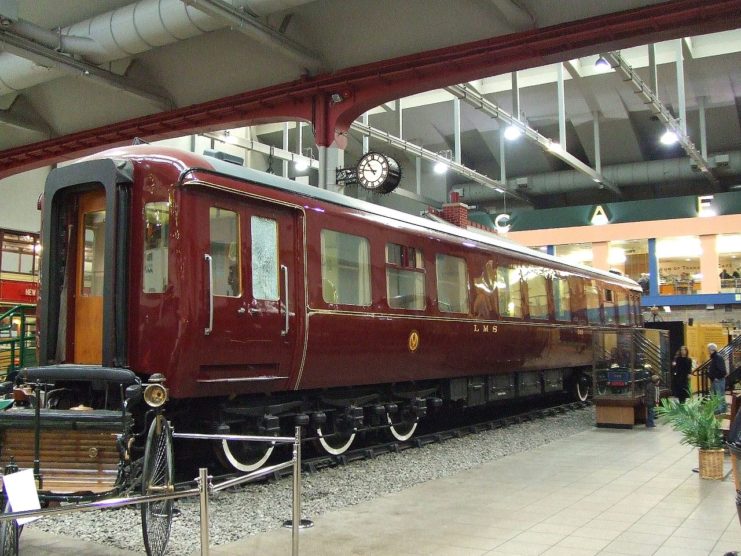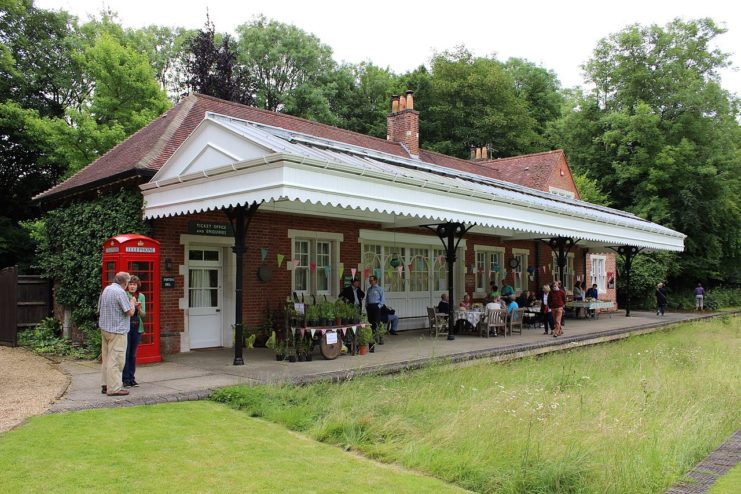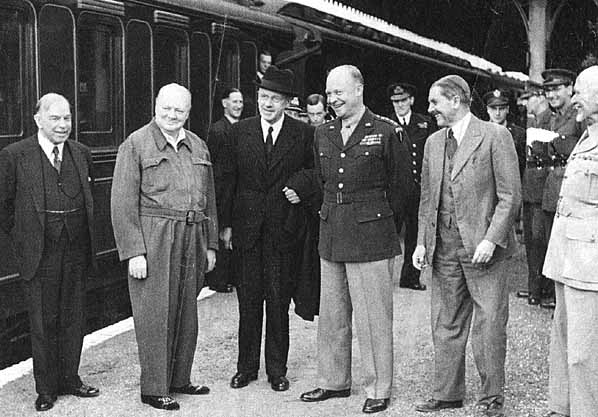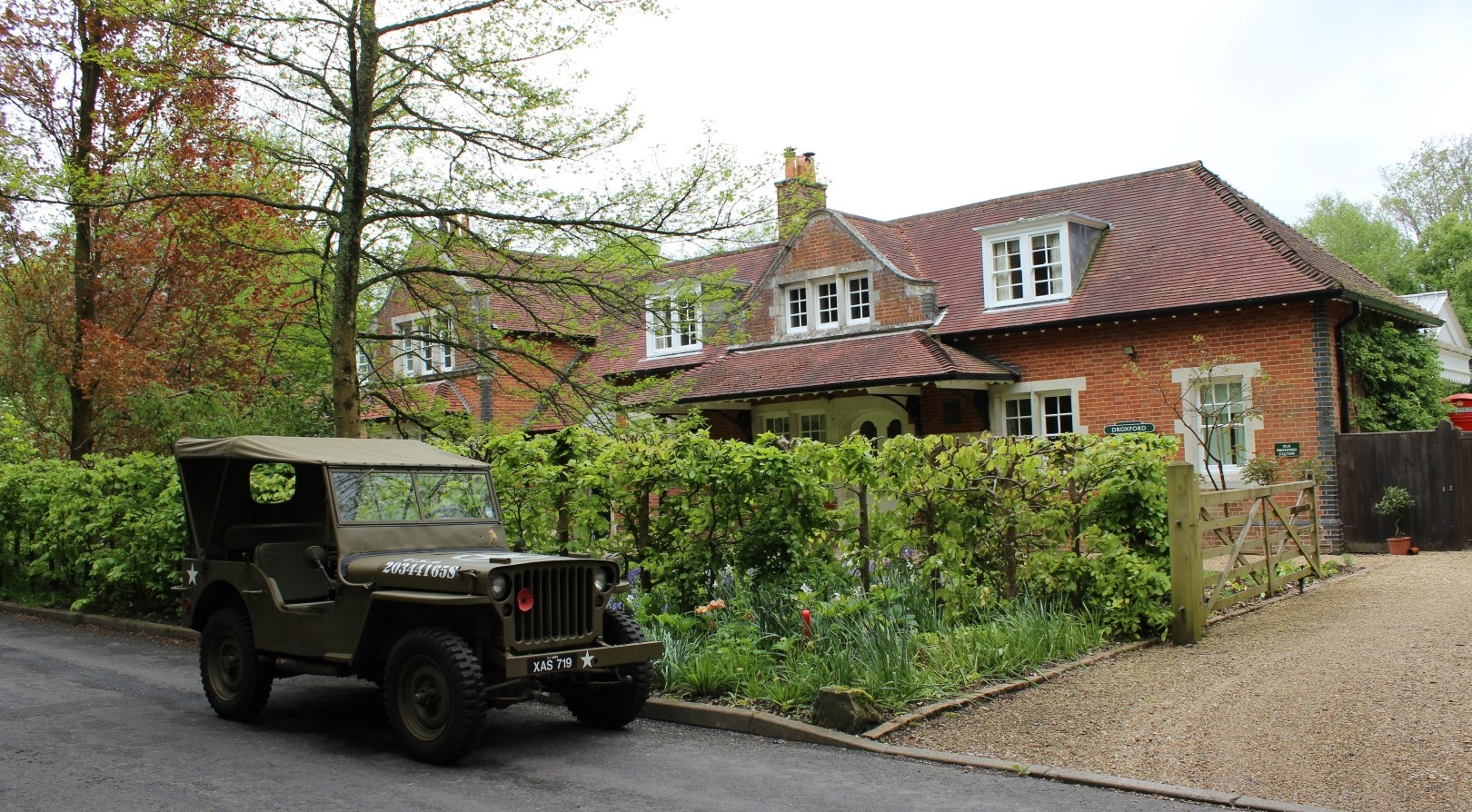In the leafy lanes of Hampshire’s Meon Valley lie the villages of Soberton and Droxford. Along Station Road there used to be a railway station on the old Meon line built in the hope that Queen Victoria would use it to travel between London and her favoured residence on the Isle of Wight. Sadly, the Queen died before the line was finished, however fate was to determine that the line would have its time in the sun.
In 1944 British Prime Minister Winston Churchill used a train as a mobile meeting and operations centre, travelling the line from London to the military docks at Portsmouth and the nearby Allied command centre at Southwick House. Just a few miles up the track from the South Coast was Droxford, where Churchill stopped the train, using it as a secret base for planning the D-Day invasion.

Today the railway station has been repurposed as a four-bedroom luxury home, the railway tracks long since torn up and the route transformed into a popular bridleway used by cyclists and other outdoor pursuits enthusiasts. The old signal box remains however, having been converted into an attractive one-bedroom annexe.
The property retains both platforms too and has direct access to the bridleway and two and a half acres of private gardens. On the market for £1.5M it has attracted interest from around the world but whoever buys it should be prepared for a steady stream of visits from history enthusiasts.

For Winston Churchill the location was perfect for meetings with the Allied commanders in order to ensure everything was in place for the invasion of Normandy in June 1944. The train even had its own codename ‘Rugged’ and would be shunted into the sidings at Droxford where it could be hidden by the spreading branches of a stand of beech trees.
The mobile headquarters were fully armoured against aerial attack, hosted meetings with ministers, Allied military commanders and heads of state from Allied nations, serving as a bunker for Downing Street, Chequers and Whitehall. On June 4th, 1944 the Free French leader Charles de Gaulle was briefed on the D-Day Operation Overlord invasion plans by both Churchill and Anthony Eden at Droxford Station.
A top-secret telegram was sent to De Gaulle which said that ‘very great military events are about to take place. ‘I should be glad if you could come to see me down here in my train, which is close to General Eisenhower’s Headquarters, bringing with you one or two of your party.’
Just before seven o’clock in the evening of June 5th, 1944 Churchill’s train steamed out of Droxford, returning to London. Hours later the invasion began, the largest and most complex air, land and sea operation ever attempted.

It had taken months of planning and hundreds of hours of secret meetings and meticulous attention to detail to take the first step toward liberation of Europe from the grip of the Nazi war machine. More than 125,000 troops were landed on five beaches, supported by hundreds of warships, some specially made for the purpose, and numerous aircraft. A further 24,000 men were parachuted in from Dakota planes.
Although the railway tracks have long gone the atmosphere of the old station remains, with the ticket office booth and cabinets retained in place in the study. The Ladies Waiting Room is now a family room with a cosy stove and the Main Waiting Room, for the hoi-polloi, has a wood burning stove and vaulted ceiling.
Another Article From Us: Company Imports Trove of M1 Carbines from Ethiopia to Sell in US
It boasts a master bedroom with an en-suite bathroom, two further bedrooms and a guest suite, a large kitchen diner and formal dining room, the whole in easy commuting distance from the coastal cities of Portsmouth and Southampton.
